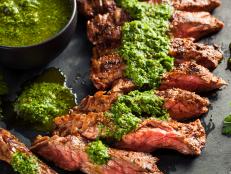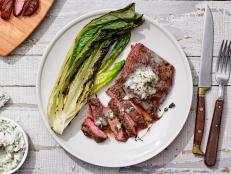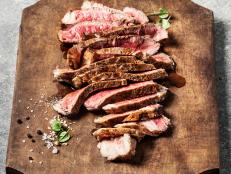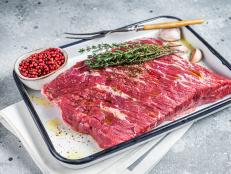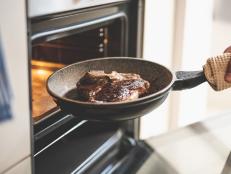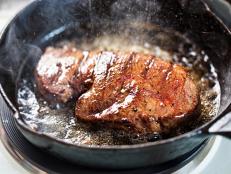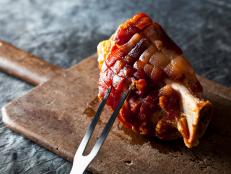How to Tenderize Steak
Turn budget cuts into steakhouse-worthy mains.
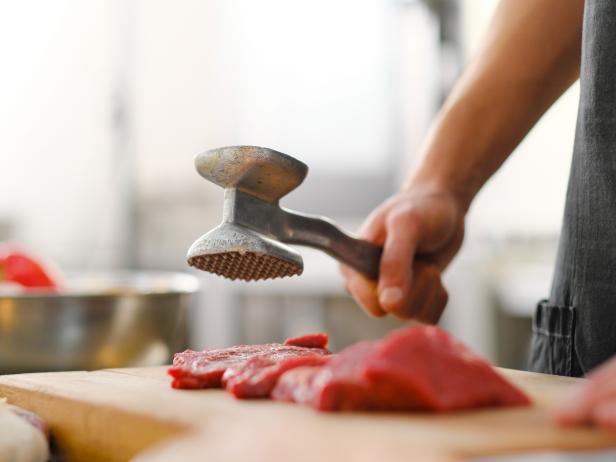
Mikhail Spaskov/Getty Images
By Layla Khoury-Hanold for Food Network Kitchen
Layla Khoury-Hanold is a contributor at Food Network.
Have you ever seen a cook pound steak with a mallet and wondered why they’re doing it? Perhaps you’re curious about budget-friendly cuts of steak but have no idea how to cook them. Here, we break down the process of tenderizing, the cuts of steak that benefit most and all the different ways to tenderize steak, including how to wield a meat mallet.
What Is Tenderizing?
Tenderizing is the process of making meat more tender by breaking down the connective tissue. You can tenderize meat in several different ways, including pounding, marinating and slow cooking, among others (more details on these processes in a moment).
Should You Tenderize Steak?
Tougher cuts of steak with a lot of connective tissue benefit from tenderizing to help break down the fibers and make the meat easier to cook, cut and eat.
Cuts of Steak that Benefit from Tenderizing
There are several cuts of steak with lots of connective tissue that benefit from tenderizing. Cuts of meat that come from the shoulder or leg of the cow tend to be the toughest because they are worked the most, but they also tend to be more flavorful. Steaks that benefit from tenderizing include:
-
Brisket
-
Chuck
-
Bottom round
-
Flank steak
-
Hanger steak
-
Tri-tip steak
-
Skirt steak
-
London Broil.
7 Ways to Tenderize Steak
1. Pounding
Using a meat mallet (or kitchen mallet) to pound steaks helps soften and tenderize the meat. Simply place the meat in between pieces of plastic wrap or wax paper and pound it prior to cooking. If you don’t have a meat mallet, you can also use a heavy kitchen tool such as a skillet, saucepan or rolling pin. A meat mallet has two sides, flat and spiky. The spiky points cut up the connective tissue and muscle fibers, so you can cook steak quickly over high heat. The spiky points create indentations in the meat that resemble small cubes, which is why you’ll sometimes see small, thin cuts of beef (typically top round or sirloin) labelled as cube steak at the grocery store. Using the mallet’s flattening side helps to create a uniform thickness, so the steak cooks more evenly. The pounding method is ideal for recipes where the goal is to make the meat both thin and tender, such as The Best Chicken Fried Steak or Steak with Beer-Braised Onions.
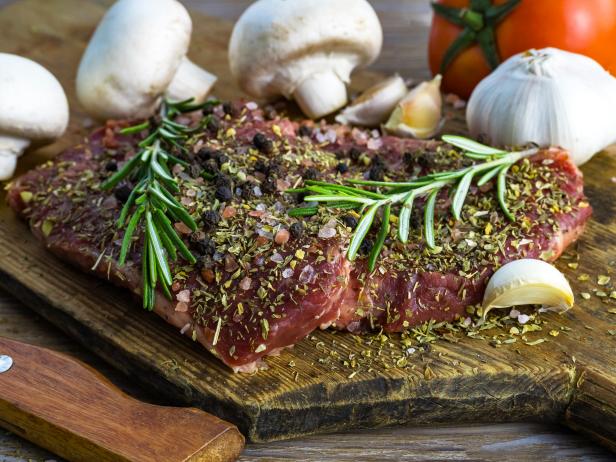
Евгения Матвеец/Getty Images
2. Salting
Most cuts of steak benefit from being salted up to an hour in advance of cooking, but especially tougher cuts. In addition to seasoning the steaks, salt helps break down proteins and make the meat more tender. Liberally salt the steaks up to an hour before cooking, then proceed according to your recipe. In this Strip Steak with Spiced Salt recipe, a spiced salt mixture has plenty of time to penetrate NY strips while the grill heats up. In this Oven Steak recipe, strip steaks are sprinkled with salt and pepper on both sides 30 minutes prior to cooking.
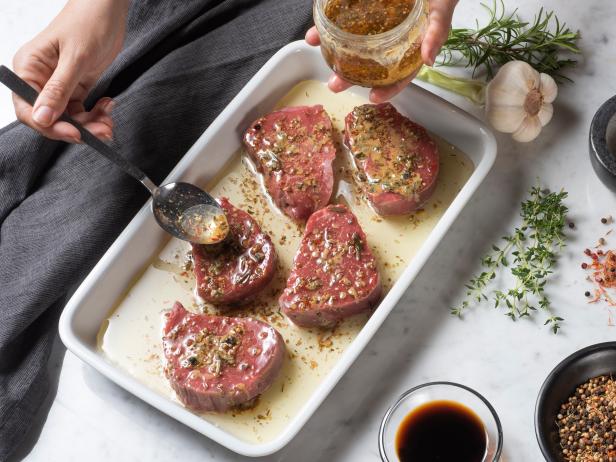
BURCU ATALAY TANKUT/Getty Images
3. Marinating
Make a marinade with acidic components—such as citrus juice, buttermilk, yogurt, wine, vinegar or soda—to help break down tough connective tissue and muscle fibers. Simply add one of these acidic components to a marinade (which should also include oil and seasoning) and use on thin, tough cuts such as flank steak, hanger steak, tri-tip steak, skirt steak or London Broil. The choice of a marinade’s acidic component varies across cuisines and cuts. Citrus figures prominently, as with this Chinese-inspired Tangerine Beef with Scallions, which relies on tangerine juice to break down tri-tip steak, and these Tex-Mex leaning Steak Fajitas with Onions and Peppers, where lime juice plays a key role in tenderizing skirt steak. These Grilled Skirt Steak Gyros employ Greek yogurt, while this Grilled Korean-Style Skirt Steak calls for cola as its main source of acid.
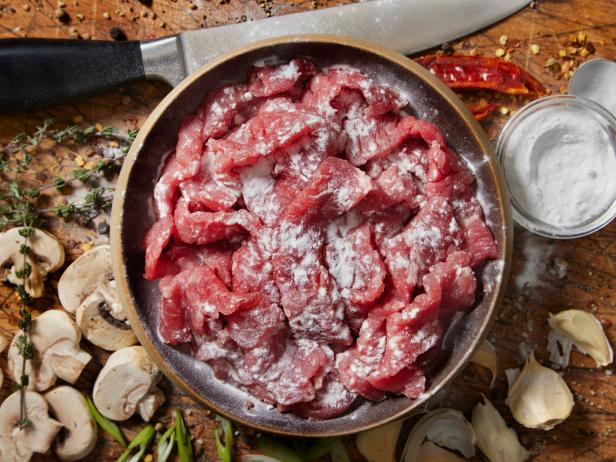
LauriPatterson/Getty Images
4. Velveting
Velveting is a Chinese method of marinating meat in a cornstarch-based slurry prior to cooking. The cornstarch mixture is typically made with equal parts cornstarch, soy sauce and sesame oil (or vegetable or peanut oil), along with flavor components such as rice vinegar, Shaoxing wine or oyster sauce. Velveting is often used to tenderize beef for stir-fried dishes, as with the sliced beef sirloin in this Spicy Beef Stir Fry and this Beef and Mushroom Stir Fry. Besides tenderizing the meat, velveting also helps form a coating that promotes even browning and helps the sauce to adhere to the meat.
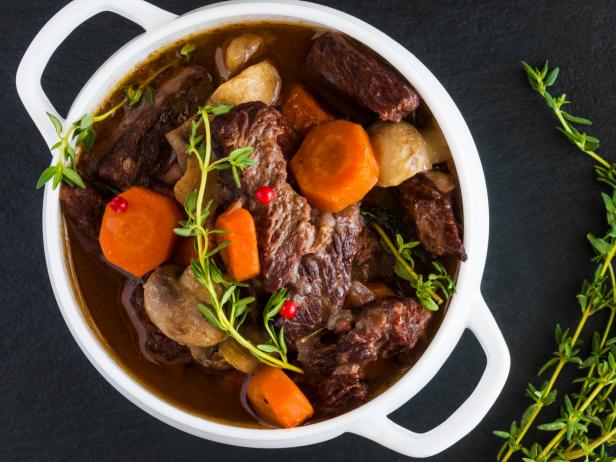
Magrig/Getty Images
5. Slow Cooking
The process of low-and-slow cooking breaks down the connective tissue and releases collagen, resulting in supple, shreddable meat. Slow cooking applications include braising, barbecuing and sous vide (cooking proteins in a vacuum sealed bag immersed in warm water). Braising and barbecuing are ideal for tough cuts such as brisket, chuck and bottom round. Try making Slow Cooker Brisket, Slow Cooker Pot Roast or Texas BBQ Braised Beef Brisket, which also benefits from an overnight dry brine. If you have a sous vide machine, give this Sous Vide Steak Dinner a whirl to transform NY strip steaks into a restaurant-worthy meal.
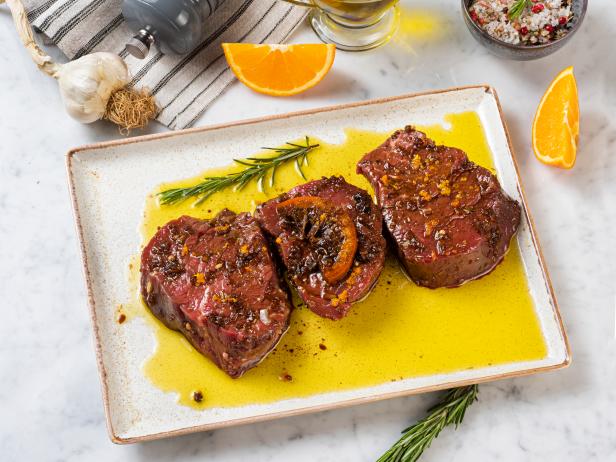
BURCU ATALAY TANKUT/Getty Images
6. Enzymatic Application
Certain fruits, including kiwi, papaya, pineapple and Asian pears, contain enzymes that are effective in tenderizing tough meat. Simply add some fruit to your marinade—about 1 to 2 tablespoons per cup of marinade—and be sure not to let the meat marinade for more than 12 hours (the enzymes are so effective they can make meat mushy). As with other marinades, this method works best with thinner cuts such as hanger or skirt steaks.
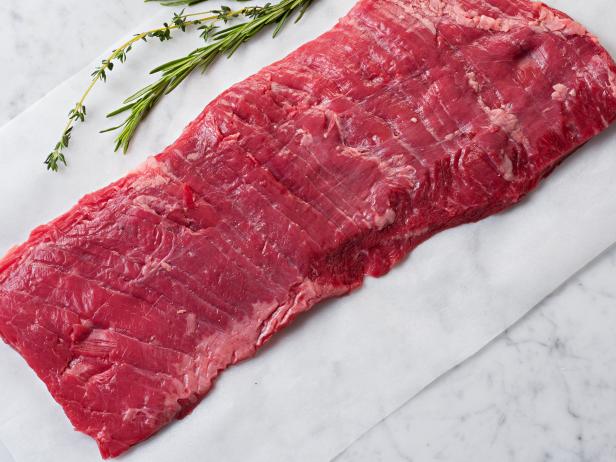
BURCU ATALAY TANKUT/Getty Images
7. Scoring
Scoring meat involves cutting shallow slits into its surface. This is helpful for tenderizing tougher cuts of steak, such as flank, because cutting the meat severs the long fibers that make it tough to chew.
Related Links:
























